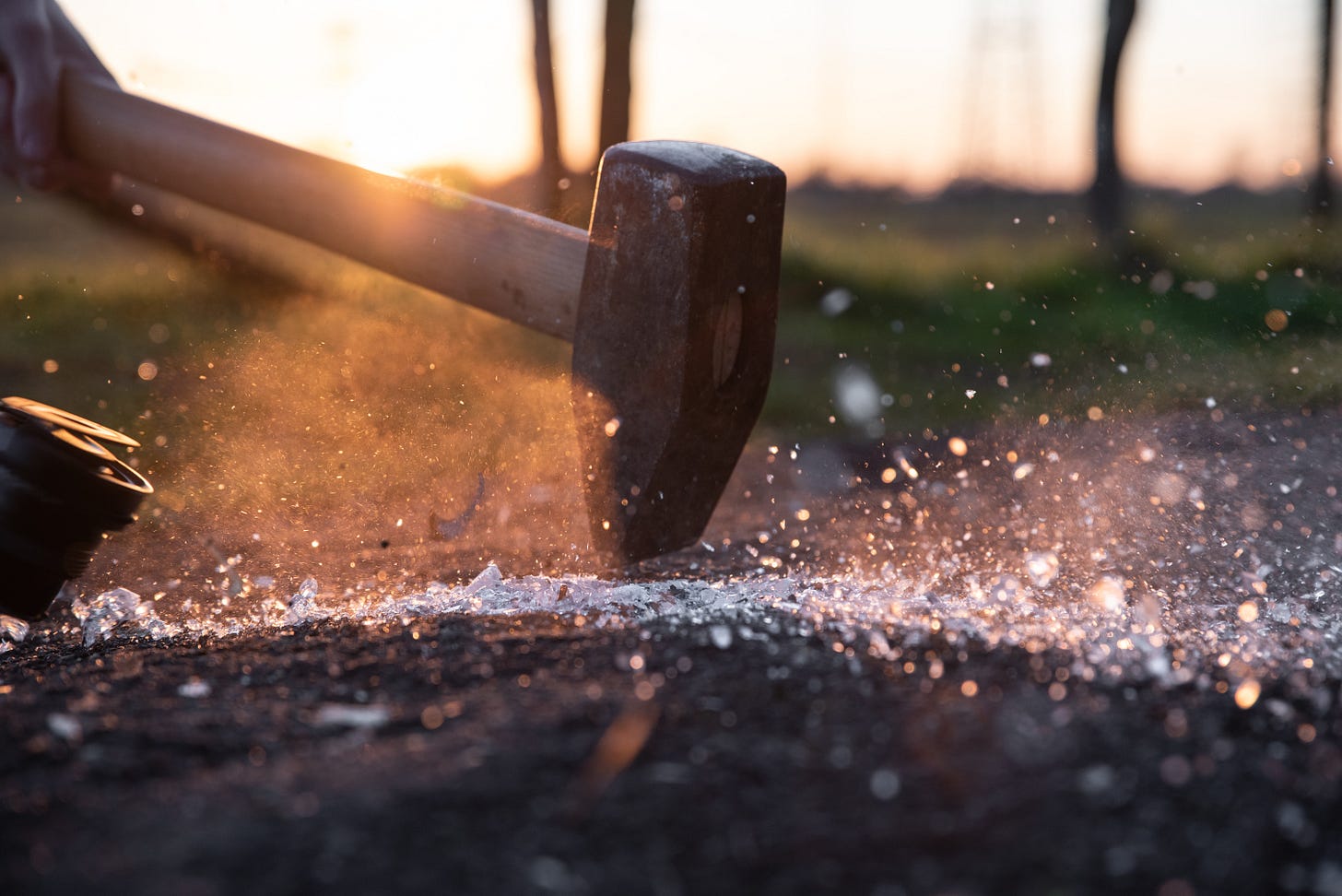#32 - First: Hammer the Basics
By now you’ve seen how it’s not enough to just follow rules, control hazards, and adhere to typical safety practices. If you want to succeed in a dynamic, ambiguous, risky and complex (DARC) environment, you also need effective maneuvering, operational resilience, communication, learning and innovation. We’ve been exploring these themes since Post #24, and are about to dive deeper. But first, I need to call out a pitfall.
Sometimes, I hear people speaking as if fire is so complex, so ambiguous, so dynamic, and so risky … that the basics of the job are not too important. You might even get this impression listening to people like me, who talk about Human and Organizational Performance (HOP), High Reliability Organizing (HRO), Resilience Engineering, and the New View of Human Factors. People in my camp like stories with a lot of ambiguity and complexity, because we like to push our understanding to the limits and discover new insights. So, why don’t I focus on the fundamentals of the job? Is it because they don’t matter? No, actually, my reason is the opposite: I know the fundamentals matter, and I assume you are already hammering them.
The basics are not enough to succeed in the DARC. But you still need the basics. If you want to square up to complexity and ambiguity, then one of the best ways to prepare is to handle what’s simple and clear. If you master the basics, then you’ll have more solid ground to maneuver when things get DARC.
Going back to the Jess and Jamie story—their circumstances were unprecedented, and unpredicted. Their situation was not just extreme, but topsy turvy. The basics can’t tell you what to do when the world acts the opposite of how its supposed to. So Jess and Jamie had to maneuver to survive. They did it through resilience, learning, communication and innovation.
But… the basics were still important. Here’s why: The reason Jess and Jamie could innovate and maneuver was because they covered the basics. Imagine, for example, if when it was time to paddle, Jamie looked at her oar and wondered what the hell is that? Or if Jess wasn’t sure how to operate a radio. Or if they didn’t have life jackets, or couldn’t read a map. Or if the first time they saw a fire shelter was when they needed to deploy it. Or if they weren’t physically fit for the job. Any of those conditions could have led to a different outcome.
But they had the fundamental skills, knowledge, and equipment. And because they had their foundations in place, they were able to adapt when they needed to.
So, if you want to maneuver successfully in the DARC, first hammer the basics.
This is also true if you want to innovate. I knew many of the great innovators of the prior generation—the ones who led breakthroughs like the human factors revolution, leadership development, investigation reform and learning culture. What they all had in common is they were rock solid on the fundamentals of the job. I also studied the century of innovators that came before them, and I can’t think of any who were sloppy on the basics.
Sometimes I hear people say we should disregard fundamentals and innovate instead. But that’s just not how it works. Innovators are first and foremost problem solvers, they don’t waste their time fixing problems that already have solutions. They innovate because they mastered the basics and the existing solutions, then recognized an enduring need that could only be met if they came up with something new. Our great innovators knew and respected their history, and they mastered the fundamentals of their craft, then they innovated. If you can think of a great innovator who disregarded fundamentals, let me know in the comments.
Having said that, American Fire Saga is not going to spend a lot of time going over the basics of the job. I’m assuming you are already hammering the fundamentals of your job, and there are plenty of resources to teach them to you.
On our expedition, we will dive into topics you can’t find anywhere else: the dynamics of Operational Resilience, Crew Risk Communication, innovation and learning.
I’m biased about this, and I’ll share why: Partly it has to do with the investigations I did. I was assigned to complex events (like Pagami), and I saw firefighters who covered the basics, and yet bad events happened. So, I tend to focus on things like maneuvering and resilience, because that’s what made the difference in my investigations. Plus, I think most firefighters already cover the basics pretty well.
Another formative experience was that the crews I worked on: We focused heavily on the basics. As a Los Padres Hotshot, our crew got a lot of recognition for our performance. As an insider, I saw what was behind all that: our leaders focused on doing very simple things very well, over and over again. They hammered the fundamentals. (They also encouraged us crew members to innovate—which fits that pattern I mentioned above.)
If I had investigated different accidents, worked on different crews, or if I were from a different generation facing different challenges—I might take a different approach. But all I can do is give you my best, based on what I saw and studied.
Alright, we’ve called out a major pitfall. You already knew it, but it was important to refresh the point because we are about to dive deeper into the DARC. You can’t bypass the fundamentals if you want Operational Resilience. First hammer the basics.
Photo by Moritz Mentges on Unsplash




